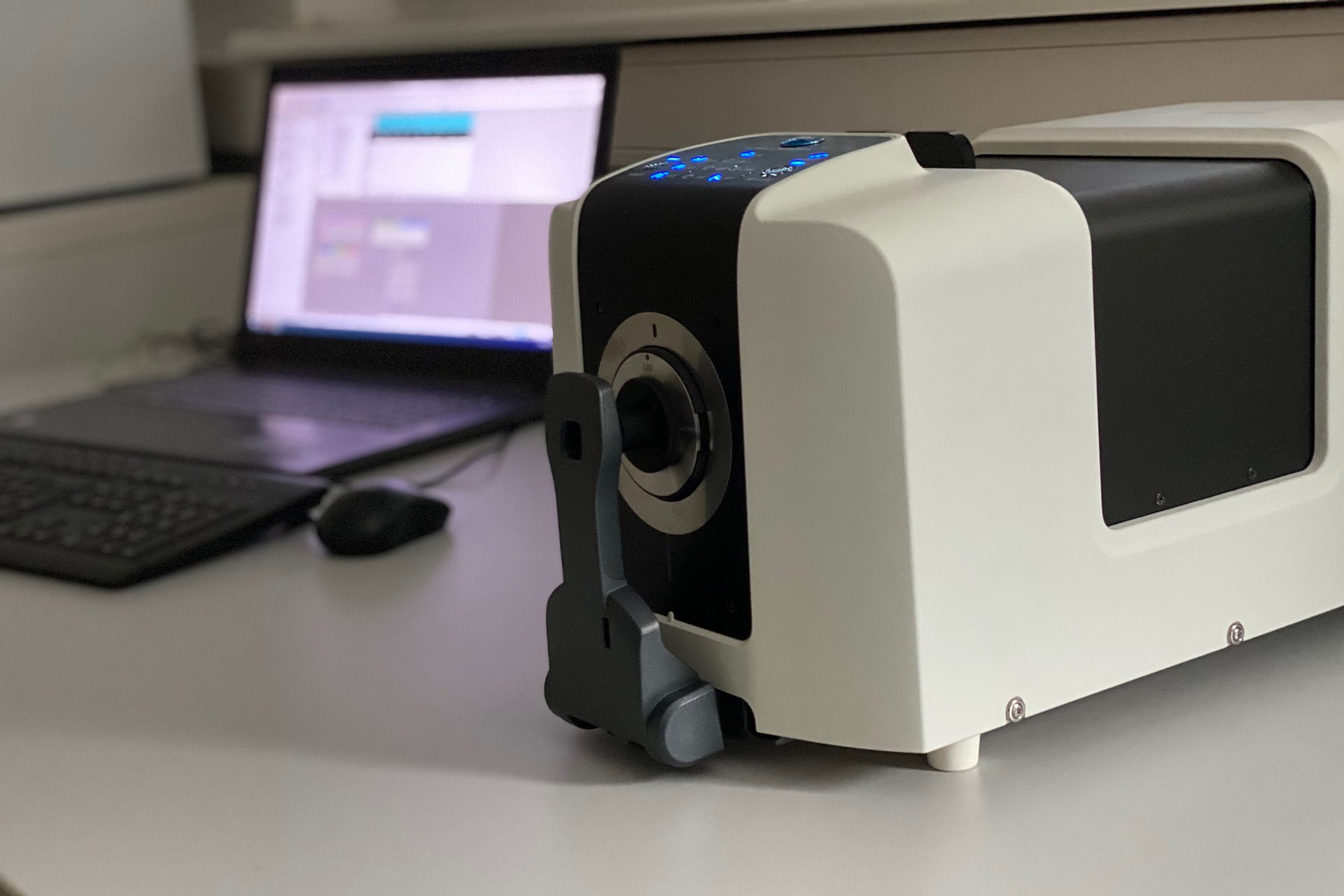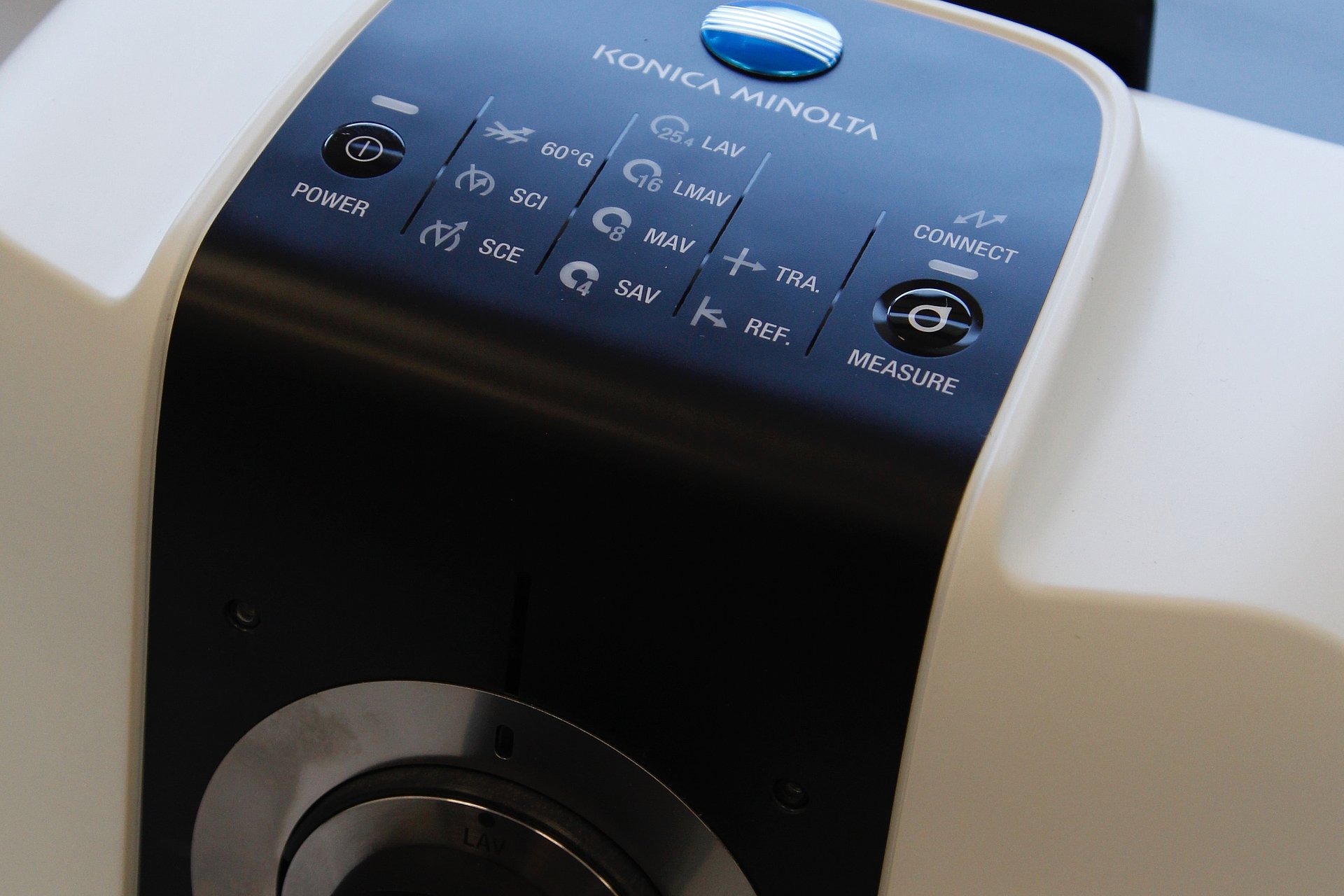Colour measurement
Benefit from our more than 10 years of experience in the field of colour measurement. An important property for the end user is the change in colour as well as the colour appearance or generally the visual properties of a material.
Spectrophotometers are used for a reproducible evaluation of the colour change, independent of the tester.
The special features of the high-precision table spectrophotometer used by us are, on the one hand, the simultaneous determination of the gloss and, on the other hand, the possibility to position the device horizontally in addition to the vertical alignment. This makes it easy to measure powdery materials, for example.

Fundamentals
According to DIN 5033-1, the term colour is defined as "a sensory impression conveyed by the eye, by which two adjacent, structureless parts of the visual field can be distinguished when viewed with the unaided eye alone“; „durch das Auge vermittelter Sinneseindruck, durch den sich zwei aneinandergrenzende, strukturlose Teile des Gesichtsfeldes bei einäugiger Betrachtung mit unbewegtem Auge allein unterscheiden lassen“.
For the reproducible determination of colour, the International Commission on Illumination CIE introduced the L*a*b* colour space in 1976, a three-dimensional, approximately equidistant colour space. The quantity L* corresponds to brightness, a* is referred to as red-green chromaticity and b* as yellow-blue chromaticity.
In addition to the colour, an important and determining quantity is the determination of the colour change or the change of the colour distance ΔE. Various mathematical approaches (colour difference formulas) are used for this, whereby the CIELAB colour difference ΔEab* is the most widely used.
Technical equipment

Spectrophotometer CM-36dG (Fa, KONICA-MINOLTA INC., Japan)
- high-precision tabletop unit
- Integrating sphere, d:8 geometry
- Measurement of colour/yellowing in reflection and transmission mode on solids possible
- Measurement of colour of liquids in transmission mode
- with gloss sensor, measuring geometry 60°, compliant with DIN EN ISO 2813
- simultaneous colour and gloss measurement with measuring apertures MAV and SAV
- flexible alignment of the instrument
- Positioning of the samples vertically as well as horizontally to the measuring aperture
- different measuring apertures (measuring ranges)
- LAV, 25.4 mm
- LMAV, 16 mm
- MAV, 8 mm
- SAV, 4 mm
Standards
Akkreditierte Normen
- ISO 4582:
Kunststoffe – Bestimmung der Änderung der Farbe und anderer Eigenschaften nach einer natürlichen oder künstlichen Bewitterung oder Belichtung
(Plastics – Determination of changes in colour and variations in properties after exposure to glass-filtered solar radiation, natural weathering or laboratory radiation sources) - ISO 7724:
- Teil 1: Grundlagen (zurückgezogene Norm)
- Teil 2: Bestimmung von Farbmaßzahlen (zurückgezogene Norm)
- Lacke und Anstrichstoffe – Farbmessung
- DIN EN ISO/CIE 11664:
- Teil 4: CIE 1976 L*a*b* Farbenraum
- Farbmetrik
Weitere Normen
- ASTM D 2244:
Standard Practice for Calculation of Color Tolerances and Color Differences from Instrumentally Measured Color Coordinates - ASTM E 308:
Standard Practice for Computing the Colors of Objects by Using the CIE System - ASTM E 313:
Standard Practice for Calculating Yellowness and Whiteness Indices from Instrumentally Measured Color Coordinates - DIN EN ISO 11664-5
CIE 1976 L*u*v* Farbenraum und gleichabständige u', v'-Farbtafel - DIN EN ISO/CIE 11664
Farbmetrik- Teil 1: CIE farbmetrische Normalbeobachter
- Teil 2: CIE Normlichtarten
- Teil 3: CIE-Farbwerte
- Teil 6: CIEDE2000-Formel für den Farbabstand
- SAE J 1545
Instrumental Color Difference Measurement for Exterior Finishes, Textiles and Colored Trim
Dr.-Ing. Marcus Schoßig
Phone: +49 (0)3461 30889-53
Write e-mail
